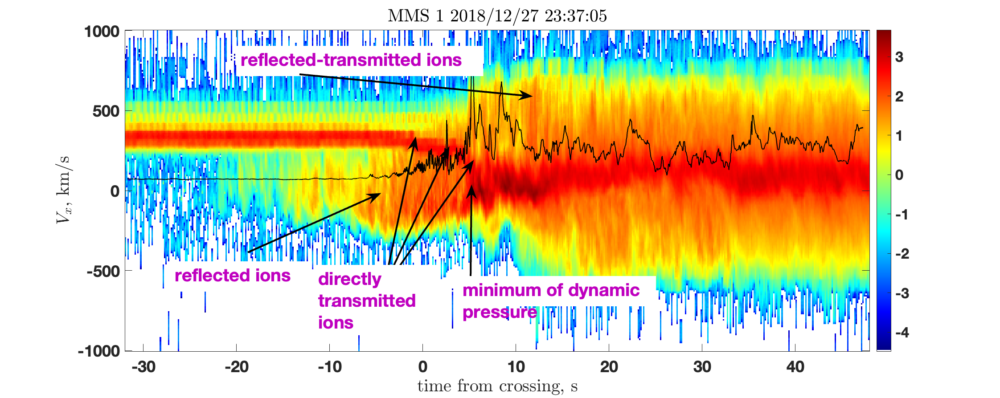Collisionless shocks (CS) are one of most fundamental phenomena in plasmas. The helio- sphere is a natural laboratory for in situ studies of these shocks but their Mach numbers are well below the Mach numbers of supernova remnant (SNR) shocks. With the increase of the Mach number the shock transition undergoes a sequence of structural changes. Understanding this sequence and dependence of the structure on the global shock parameters is the key for bridging direct heliospheric studies and indirect studies of SNR shocks. So far such studies focused on specific microscopic processes producing various features.
We suggest that a CS is a self-regulatory system, at which the mass, momentum, and energy fluxes should be stable. The shock structure is the one which ensures this stability for given up- stream parameters. Within this approach, the focus is shifted from reason to purpose: more than one microscopic process may lead to the same type of CS structure, which is determined solely by the requirement of stable fluxes. We propose an international team consisting of specialists in heliospheric shock observations, numerical simulations, astrophysical shocks, and theory, in or- der to advance this novel paradigm. The specific questions we will tackle are: a) transition from a monotonic profile to the overshoot-undershoot structure, b) transition from a plane overshoot- undershoot structure to a rippled structure, c) whether reformation or a completely turbulent state come beyond rippling. The ISSI platform is the most suitable for such large and diverse teams and brainstorming. We expect that the synergy of the participants will employ the novel paradigm to advance CS physics.
Collisionless Shock as a Self-Regulatory System
ISSI Team led by Gedalin M.

